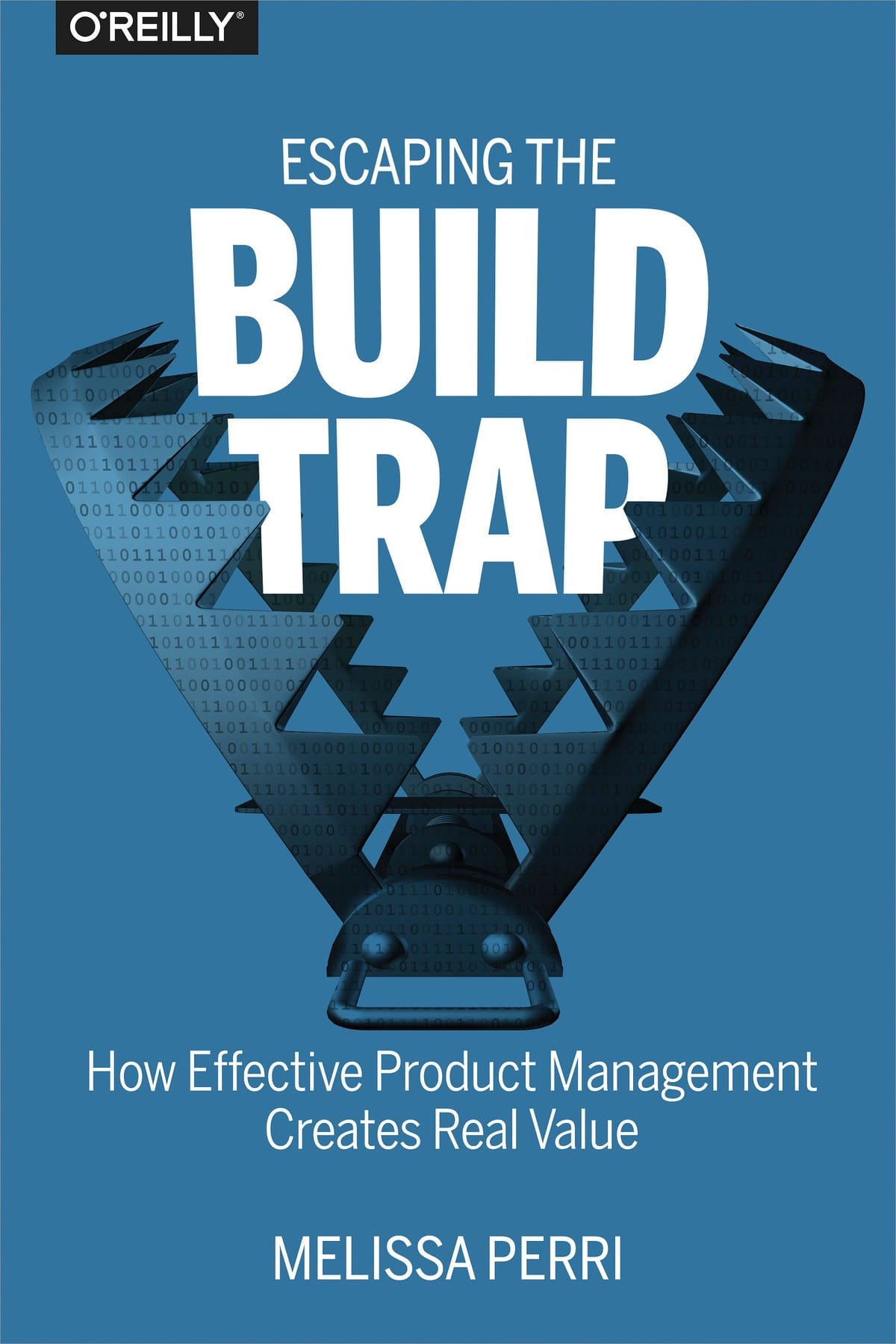Escaping the Build Trap: A Detailed Briefing

This document summarises the key themes and insights from Melissa Perri's book, "Escaping the Build Trap." It explores the common pitfalls organisations face when prioritising output over outcome and provides a framework for becoming a truly product-led company.
I. The Build Trap: A Widespread Problem
The "build trap" is a phenomenon where companies become fixated on shipping features without a clear understanding of their value or impact on customer needs and business goals. This often leads to wasted resources, frustrated teams, and ultimately, failing products.
- Perri states: "The build trap is a terrifying place for companies because it distracts them. Everyone is so focused on shipping more software that they lose sight of what is important: producing value for customers, hitting business goals, and innovating against competitors." (Chapter 1)
- Examples: Kodak's failure to adapt to digital photography, Microsoft's pre-Satya Nadella era.
II. The Value Exchange System: A Key Concept
At the heart of successful product development lies the Value Exchange System. It emphasizes the symbiotic relationship between businesses and their customers.
- Perri explains: "Product management is the domain of recognizing and investigating the known unknowns and of reducing the universe around the unknown unknowns." (Chapter 5)
III. Constraints on Value Exchange: Identifying Roadblocks
Several factors can hinder the effectiveness of the Value Exchange System, both internal and external.
- External constraints: Changing customer needs, evolving technology landscapes.
- Internal constraints: Rigid development processes, lack of experimentation, unclear strategy, poor communication.
IV. Product Manager: A Critical Role, Often Misunderstood
Product managers play a vital role in navigating these constraints and ensuring the delivery of valuable products.
- Perri argues: "Product managers are not the mini-CEOs of a product" and "[they] really own the 'why' of what they are building." (Chapter 6 & 7)
- Common misconceptions: The "Mini-CEO" and "The Waiter" archetypes.
V. The Importance of Strategy: Aligning for Success
A well-defined product strategy serves as a decision-making framework, guiding the company towards its vision.
- Perri highlights: "Good strategy isn’t a detailed plan. It’s a framework that helps you make decisions." (Chapter 10)
- Netflix's success: Driven by a clear vision, strategic intents, and a willingness to pivot when necessary.
VI. Strategy Deployment: From Vision to Actionable Initiatives
Effective strategy deployment cascades down through various levels, ensuring alignment and focus.
- Key levels: Company vision, strategic intents, product initiatives, and options.
- Perri's Product Kata: A systematic approach to problem-solving and identifying the right solutions to build. (Chapter 15)
VII. Building the Right Thing: Emphasizing Experimentation and Learning
The product development process should be driven by experimentation and learning, validated by customer feedback.
- Key phases: Problem exploration, solution exploration, and solution optimization.
- Perri emphasizes: "Don’t spend your time overdesigning and creating unique, innovative solutions for things that are not core to your value proposition." (Chapter 17)
VIII. The Product-Led Organization: A Culture Shift
Becoming truly product-led requires a cultural shift that embraces outcome-oriented thinking, encourages experimentation, and prioritises customer centricity.
- Key characteristics: Open communication, appropriate rewards and incentives, flexible budgeting, psychological safety, and a customer-centric mindset.
IX. Measuring Success: Metrics that Matter
- Moving beyond vanity metrics: Focusing on actionable metrics that inform decision-making and reflect progress towards desired outcomes.
- Useful frameworks: Pirate Metrics (AARRR) and HEART metrics.
X. Key Takeaways: Escaping the Trap
- Focus on outcomes, not outputs. Understand the value you are delivering to customers and the impact on your business.
- Empower product managers. Give them the autonomy and support they need to thrive.
- Develop a clear product strategy. Align your teams around a shared vision and a framework for decision-making.
- Embrace experimentation and learning. Validate your assumptions and constantly iterate based on customer feedback.
- Cultivate a customer-centric culture. Prioritise customer needs and build products that truly solve their problems.
By embracing these principles and implementing the frameworks outlined in "Escaping the Build Trap," organisations can transition into truly product-led entities, creating a culture of innovation and sustainable success.
Click here to purchase on Amazon today!
